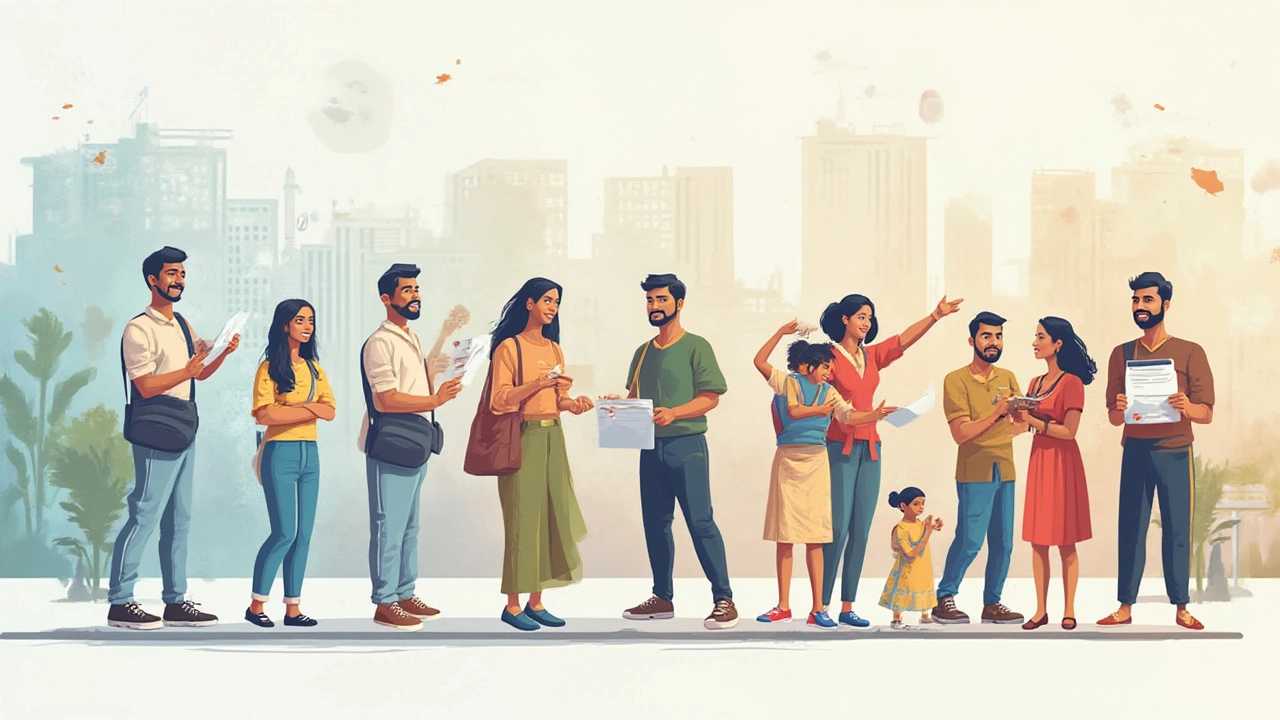
Ever wondered why some friends finish their diplomas in a year while others take three? The world of diploma courses in India is surprisingly diverse. There’s no fixed rule—some diplomas zip by in a flash, while others demand real dedication. From learning how to repair air conditioners to designing websites or working as a nurse, these courses throw open a bunch of career doors in less time than a full degree.
Understanding Diploma Course Lengths in India
Let’s break it down: in India, a diploma course can last anywhere from six months to three years—sometimes even a little more or less, depending on what you’re studying. The most common pattern? Most practical, skill-based diplomas after your 10th or 12th standard stretch from 1 to 3 years. But if you’re thinking about something offbeat—like a three-month digital marketing bootcamp or a six-week bakery course—you’ll find plenty of quick options too.
For example, polytechnic diplomas are super popular. These are typically three years long if you start after 10th grade, but only two years if you jump in after 12th with the right subjects. On the other hand, a diploma in event management may just take up six months, and a diploma in yoga teaching might fit into a few weeks during your summer break.
Now, here’s an interesting thing: while engineering diplomas almost always last three years (like in government polytechnic colleges), healthcare diplomas (such as in pharmacy or nursing) usually take two years. Creative diplomas in fashion design or web development? Expect anywhere from 6 months to 2 years, depending on the curriculum and whether the course is full-time or part-time. Even big-name universities and recognized institutes can have wildly different course durations, all depending on the skill set and depth of learning offered.
If you look at recent data from the All India Council for Technical Education (AICTE), enrollment in diploma programs, especially tech and engineering ones, keeps climbing every year. Why? Young people want to enter the job market faster, and diplomas are their express ticket.
If you want a snapshot, here’s a quick table to compare durations for typical diploma courses in India:
| Type of Diploma | Typical Duration | Entry Level |
|---|---|---|
| Polytechnic (Engineering/Tech) | 3 years (after 10th), 2 years (after 12th) | 10th or 12th |
| Healthcare (Nursing, Pharmacy) | 2 years | 12th |
| Computer Applications/IT | 6 months – 2 years | 10th/12th/graduation |
| Business Management/Finance | 1 – 2 years | 12th |
| Media, Art, and Design | 6 months – 2 years | 10th/12th |
| Hospitality & Tourism | 6 months – 1 year | 10th/12th |
| Vocational (Electrician, Plumber etc.) | 6 months – 2 years | 10th |
Why Diploma Course Duration Can Make a Big Difference
Here’s a fact I learned the hard way: shorter doesn’t always mean better. Since diploma courses are usually practical and skill-driven, the course length often spells out how deep you’ll go. Take a six-month computer course—it’ll teach you the basics, maybe some shortcuts to land a helpdesk job. But spend two years in a software diploma, and you’ll actually build projects, crack industrial internships, and possibly be ready for tougher jobs or even a lateral entry into a bachelor’s degree.
I’ve seen plenty of students, especially after high school, pick diploma courses for quick entry into the workforce. The shorter ones are great if you need a job fast, or if you want to stack up multiple short diplomas (this is common in IT). But longer diplomas almost always have more recognition, better placement support, and a curriculum that’s way more thorough. Sometimes, government or licensing bodies only accept a diploma if it’s at least 2 or 3 years long—this is especially true in engineering, pharmacy, or nursing.
The other side? If you have time, a well-chosen longer diploma can actually help you leapfrog into the second year of a relevant degree (called lateral entry). Imagine shaving off a year of your bachelor’s program because your diploma was that solid! Pretty cool, right?
But, if you’re juggling work, family, or Simba (my cat, who needs attention daily), shorter diplomas are easier to manage. Evening classes and online modules let you learn at your own pace. In fact, with new online learning platforms exploding—think IGNOU, NIOS, Swayam—there are flexible schedules everywhere.

Eligibility Requirements and When to Start Your Diploma
So, who can start a diploma course and when? The answer depends a lot on the subject you want. Most technical diplomas (like polytechnic) let you enroll right after Class 10, usually around age 15 or 16. But courses connected to healthcare, education, or any subject needing more academic teeth, often ask for Class 12 (at least, and sometimes specific streams like Science with Biology or Math).
Here’s a quick guide for different fields:
- After 10th: Polytechnics (civil, mechanical, electrical engineering), vocational trades (automobile repair, electronic technician), diploma in elementary education (sometimes for teaching at pre-primary level)
- After 12th: Paramedical and nursing diplomas, computer applications, fashion designing, hotel management, business administration
- After graduation: Postgraduate diplomas, advanced diplomas in management, journalism, data science, etc.
Entrance tests are common for popular and government-approved courses (think Delhi Polytechnic, Maharashtra DTE, or AICTE-affiliated ones). Private institutes, especially for creative or job-oriented diplomas, might just use personal interviews or on-the-spot admission. One thing to watch—always check for UGC, AICTE, or state board recognition before you join, or you might end up with a cool-looking, totally useless paper certificate.
The Pros and Cons: Why Pick a Diploma Over a Degree?
Let’s not kid ourselves—degrees still rule in India for jobs that need a sense of status (doctor, lawyer, white-collar business jobs), but diploma courses are whipping up change like never before. Here’s the best part: you can gain practical skills, spend less money, and finish way faster—perfect if you want to earn earlier or try out different industries.
For example, I met a café chef once who spent just 9 months doing a culinary diploma—now he’s running his own cloud kitchen in Mumbai. Another friend picked a two-year polytechnic, and three years later cracked GATE to enter a top engineering college through lateral entry.
On the flip side, not every college or employer treats a diploma as equal to a degree. You may hit promotion ceilings for roles that demand a bachelor’s. Also, some short-term certificates are only valid in that specific city or state—so double-check recognition and placement track records.
One smart tip: combine a diploma with a stack of short, certified online courses. For example, a two-year IT diploma plus a specialization in cybersecurity can put you way ahead of just degree holders. Employers notice practical skills and certifications much more these days, especially outside government jobs.

How to Choose the Right Diploma Course and Plan Your Career
Picking a diploma course can be confusing. Should you follow the crowd and pick engineering, or chase your passion in design or business? Hang on—here’s how to make a practical decision:
- First, take stock of your strengths and interests. If you’re obsessed with gadgets, think polytechnic electronics. Love numbers? Go for business admin or finance diplomas.
- Second, snoop around about the course syllabus and if there are internships or industry attachments. The real magic of diplomas lies in hands-on training, not just theory.
- Check the recognition: Is the institute AICTE or state board approved? Are previous batches placed in decent companies?
- Look for alumni reviews or check with current students—ask about the course’s real-world value and how long it actually takes, since timings can differ based on batches, holidays, and exam schedules.
- Be honest about your situation. If you need to work part-time, opt for evening classes or distance diplomas. Many students now blend jobs and learning, maximizing both.
- If you’re unsure, start small—a six-month or one-year diploma is a low-risk experiment. You can always upgrade later.
One bonus tip from living with Simba: always give yourself some downtime. Diploma courses can get intense, especially with projects and practicals piling up. Make time for hobbies or fur buddies, so you won’t burn out by the last semester.
So, how long does a diploma course take in India? There’s no one-size-fits-all answer, but whether you finish in three years or three months, the diploma path can work wonders—if you choose wisely and play to your strengths. The job market is looking for skilled hands, not just degrees—and a well-chosen diploma could be the fastest way to get your foot in the door.
